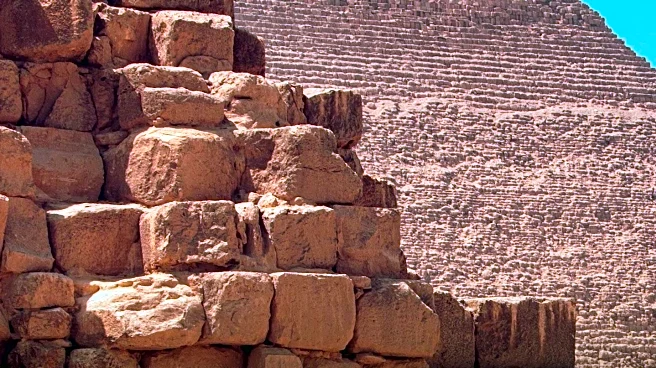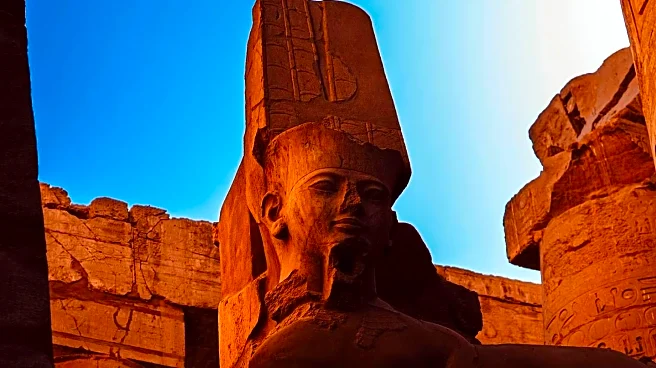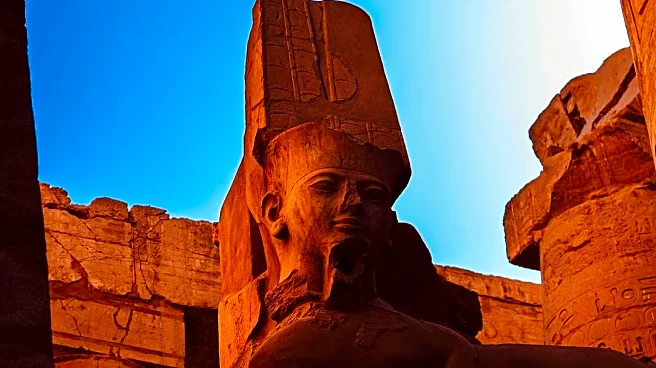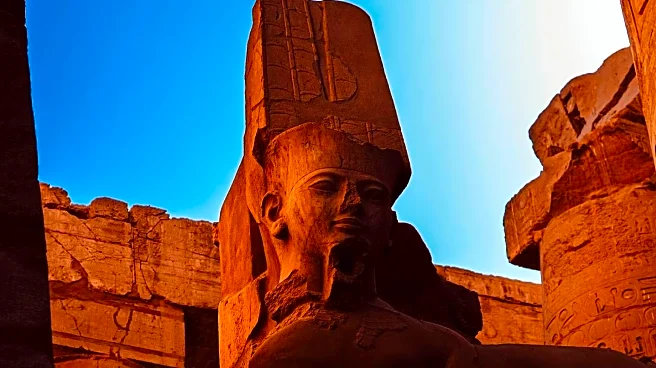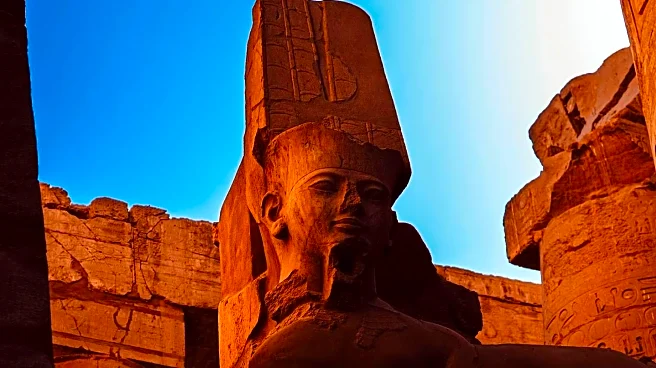What's Happening?
The tomb of Pharaoh Amenhotep III in Luxor has been reopened following a comprehensive restoration process that lasted over 20 years. The tomb, which dates back 3,000 years, had been looted since 1799. The restoration efforts, led by UNESCO and Japanese experts, have successfully restored the 18th dynasty murals, installed new lighting, and improved the safety of the stairs within the tomb. This reopening is part of Egypt's broader initiative to boost its tourism sector, coinciding with the upcoming inauguration of the Grand Egyptian Museum near the Giza Pyramids, scheduled for November 1, 2025.
Why It's Important?
The reopening of Amenhotep III's tomb is a significant milestone in Egypt's efforts to revitalize its tourism industry, which has been a crucial part of the country's economy. By restoring and showcasing its rich historical heritage, Egypt aims to attract more international visitors, thereby increasing tourism revenue. The collaboration with UNESCO and Japanese experts highlights the importance of international cooperation in preserving cultural heritage. This event also underscores the global interest in ancient Egyptian history and its potential to draw tourists from around the world.
What's Next?
With the reopening of Amenhotep III's tomb, Egypt is expected to see an increase in tourist visits to Luxor, a city renowned for its historical sites. The upcoming inauguration of the Grand Egyptian Museum is anticipated to further enhance Egypt's appeal as a tourist destination. As Egypt continues to invest in the restoration and promotion of its archaeological sites, it may see a positive impact on its economy through increased tourism. Stakeholders in the tourism industry, including local businesses and international travel agencies, are likely to benefit from the renewed interest in Egypt's historical attractions.
Beyond the Headlines
The restoration of Amenhotep III's tomb not only serves as a boost to Egypt's tourism but also raises awareness about the importance of preserving historical sites. It highlights the ethical responsibility of protecting cultural heritage from looting and degradation. The involvement of international experts in the restoration process reflects a growing trend of global collaboration in cultural preservation. This initiative may inspire similar efforts in other countries with rich historical backgrounds, promoting a shared commitment to safeguarding world heritage.

